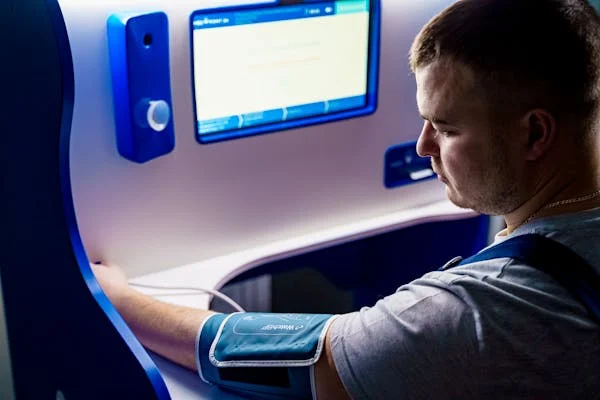New progress in wearable blood pressure monitoring enabled by flexible electronics and machine learning
Cardiovascular disease is the leading cause of death worldwide. Hypertension, as one of the predisposing factors of cardiovascular disease, is an important reason for the high incidence of cardiovascular disease. Actively preventing hypertension can greatly reduce the risk of cardiovascular disease.
At present, blood pressure monitoring is usually carried out using cuff sphygmomanometers in clinical practice. Inflation and deflation of the cuff during the measurement process may cause discomfort to patients. In addition, cuff-based blood pressure measurement is limited to providing intermittent measurement under static conditions, and real-time dynamic changes in blood pressure cannot be monitored and recorded. Therefore, wearable cuffless blood pressure monitoring contributes to continuous and comfortable blood pressure monitoring, playing a crucial role in the prevention and screening of hypertension and cardiovascular diseases.
In a review (https://doi.org/10.1016/j.wees.2024.05.004) published in the KeAi journal Wearable Electronics, a team of researchers from the Collaborative Innovation Center of Advanced Microstructures at Nanjing University looked at the progress of wearable cuffless blood pressure monitoring.
The authors focused on each aspect of realizing wearable cuffless blood pressure monitoring from a full-process perspective, and reviewed theoretical foundations, recent advances in wearable sensors facilitated by flexible electronics, and back-end signal processing of wearable cuffless blood pressure monitoring.
“The advancement of flexible electronics empowers health monitoring devices with enhanced portability, skin-friendliness, and wearing comfort, facilitating more efficient real-time wearable monitoring,” notes senior and co-corresponding author Lijia Pan. “Typically, wearable cuffless blood pressure monitoring integrates sensors, signal processing, and algorithms into a unified system for blood pressure estimation.”
Flexible electrodes, as well as flexible mechanical, optical and ultrasonic sensors offer a broad range of options for the sensors of wearable cuffless blood pressure monitoring. Concurrently, with the continuous development of machine learning, more accurate blood pressure estimation models can be constructed with the help of artificial neural network. The combination of textile triboelectric sensor, flexible strain sensor array, and graphene electronic tattoo with machine learning ensures the usability of wearable cuffless blood pressure monitoring in personalized medicine, which further improves the scope of the application of flexible electronics in wearable cuffless blood pressure monitoring.
“At the level of flexible sensors and systems, research on wearable cuffless blood pressure monitoring has achieved significant breakthroughs. However, further advancements are required to overcome its limitations before clinical applications can be realized,” concludes co-corresponding author Yi Shi.
Full bibliographic information
Published on 16/08/2024 by TranSpread
Paper title: Wearable cuffless blood pressure monitoring: From flexible electronics to machine learning
Funding information: This work was supported by the National Key Research and Development Program of China under Grant No. 2021YFA1401103; The National Science Fund for Distinguished Young Scholars under Grant No. 61825403; The National Natural Science Foundation of China under Grants No. 61921005 and 61674078.
DOI: 10.1016/j.wees.2024.05.004
Original Source URL: https://doi.org/10.1016/j.wees.2024.05.004
Journal: Wearable Electronics





